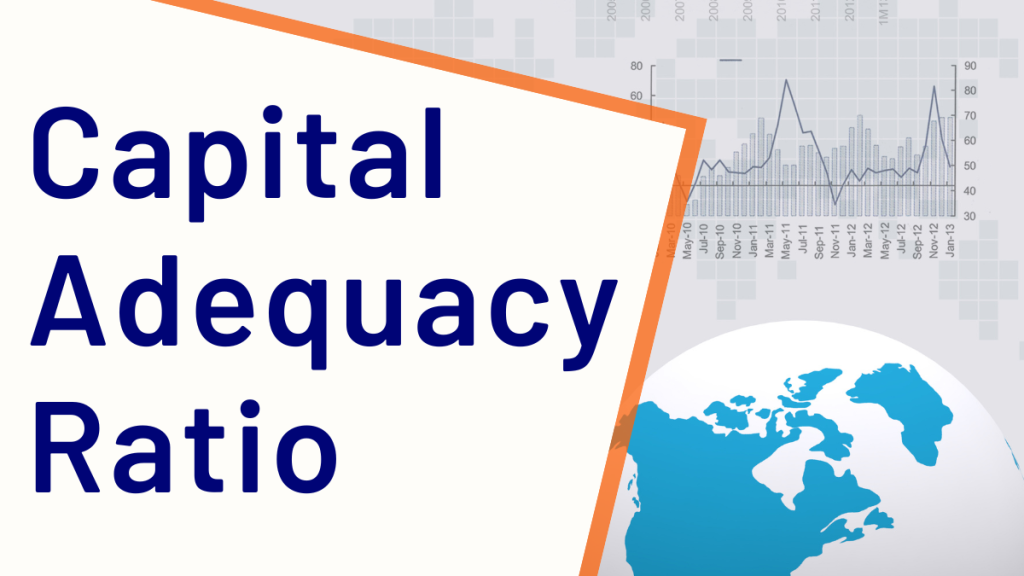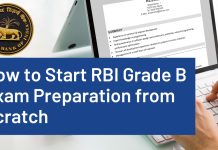Imagine a situation when Loans provided by the bank turn into bad loans and banks don’t have sufficient capital to absorb the losses. The depositor’s money with the bank will be at stake. Our financial system will crumble. In order to protect the banking system from withstanding this shock, The Basel Committee-initially named the Committee on Banking Regulations and Supervisory Practices, established by the Central Bank of Governors of the Group of Ten countries, came up with the idea of the Capital Adequacy Framework. The Reserve Bank of India decided in April 1992 to introduce a risk-asset ratio system for banks (including foreign banks) in India as a capital adequacy measure in line with the Capital Adequacy Norms prescribed by Basel Committee.

What is Capital Adequacy Ratio?
Capital Adequacy Ratio (CAR) is a bank’s capital ratio in relation to its risk-weighted assets and current liabilities. Central banks and bank regulators decide to prevent commercial banks from taking excess leverage and becoming insolvent in the process.
In other words, it measures how much capital a bank has with it as a percentage of its total credit exposure. Bank regulators enforce this ratio to ensure credit discipline in order to protect depositors and promo.
In order to understand CAR thoroughly let us understand some common terminologies which will make your understanding much better.
CAPITAL
The basic approach of the capital adequacy framework is that a bank should have sufficient capital to provide a stable resource to absorb any losses arising from the risks in its business. Capital is divided into tiers according to the characteristics/qualities of each qualifying instrument. For supervisory purposes capital is split into two categories: Tier I and Tier II. These categories represent different instruments’ quality as capital. Tier I capital consists mainly of share capital and disclosed reserves and it is a bank’s highest quality capital because it is fully available to cover losses. Tier II capital, on the other hand, consists of certain reserves and certain types of subordinated debt. The loss absorption capacity of Tier II capital is lower than that of Tier I capital. When returns of the investors of the capital issues are counter-guaranteed by the bank, such investments will not be considered Tier I/II regulatory capital for the purpose of capital adequacy.
CREDIT RISK
Credit risk is most simply defined as the potential that a bank’s borrower or counterparty may fail to meet its obligations in accordance with agreed terms. It is the possibility of losses associated with a diminution in the credit quality of borrowers or counterparties. In a bank’s portfolio, losses stem from outright default due to the inability or unwillingness of a customer or a counterparty to meet commitments in relation to lending, trading, settlement, and other financial transactions. Alternatively, losses result from a reduction in portfolio arising from actual or perceived deterioration in credit quality.
For most banks, loans are the largest and the most obvious source of credit risk; however, other sources of credit risk exist throughout the activities of a bank, including in the banking book and in the trading book, and both on and off-balance sheet. Banks increasingly face credit risk (or counterparty risk) in various financial instruments other than loans, including acceptances, inter-bank transactions, trade financing, foreign exchange transactions, financial futures, swaps, bonds, equities, options, and in guarantees and settlement of transactions.
The goal of credit risk management is to maximize a bank’s risk-adjusted rate of return by maintaining credit risk exposure within acceptable parameters. Banks need to manage the credit risk inherent in the entire portfolio, as well as, the risk in the individual credits or transactions. Banks should have a keen awareness of the need to identify, measure, monitor, and control credit risk, as well as, to determine that they hold adequate capital against these risks and they are adequately compensated for risks incurred.
MARKET RISK
Market risk refers to the risk to a bank resulting from movements in market prices in particular changes in interest rates, foreign exchange rates, and equity and commodity prices. In simpler terms, it may be defined as the possibility of loss to a bank caused by changes in the market variables. The Bank for International Settlements (BIS) defines market risk as “the risk that the value of ‘on’ or ‘off-balance sheet positions will be adversely affected by movements in equity and interest rate markets, currency exchange rates and commodity prices”. Thus, Market Risk is the risk to the bank’s earnings and capital due to changes in the market level of interest rates or prices of securities, foreign exchange, and equities, as well as, the volatilities of those changes.
CAPITAL FUNDS
The capital funds would include the components of Tier I capital and Tier II capital.
Elements of Tier I Capital:
Paid-up capital (ordinary shares), statutory reserves, and other disclosed free reserves if any; Perpetual Non-cumulative Preference Shares (PNCPS) eligible for inclusion as Tier I capital – subject to laws in force from time to time; Innovative Perpetual Debt Instruments (IPDI) eligible for inclusion as Tier I capital; and Capital reserves representing surplus arising out of sale proceeds of assets.
Elements of Tier II Capital:
The elements of Tier II capital include undisclosed reserves, revaluation reserves, general provisions and loss reserves, hybrid capital instruments, subordinated debt, and investment reserve accounts.
Elements of Tier III Capital:
Tier 3 capital debt may include a greater number of subordinated issues when compared with tier 2 capital. As defined by the Basel II Accords, to qualify as tier 3 capital, assets must be limited to no more than 2.5 times a bank’s tier 1 capital, be unsecured, subordinated, and whose original maturity no less than two years.
Risk-Weighted Assets:
Risk-weighted assets are used to determine the minimum amount of capital a bank must hold in relation to the risk profile of its lending activities and other assets. This is done in order to reduce the risk of insolvency and protect depositors. The more risk a bank has, the more capital it needs on hand. The capital requirement is based on a risk assessment for each type of bank asset.
For example, a loan that is secured by a letter of credit is considered to be riskier than a mortgage loan that is secured with collateral and thus requires more capital.
The formula used to measure Capital Adequacy Ratio is = (Tier I + Tier II + Tier III (Capital funds)) /Risk-weighted assets)
USE OF CAR:
Capital adequacy ratio is the ratio that determines the bank’s capacity to meet the time liabilities and other risks such as credit risk, operational risk, etc. In the most simple formulation, a bank’s capital is the “cushion” for potential losses and protects the bank’s depositors and other lenders. Banking regulators in most countries define and monitor CAR to protect depositors, thereby maintaining confidence in the banking system.
CAR is similar to leverage; in the most basic formulation, it is comparable to the inverse of debt-to-equity leverage formulations (although CAR uses equity over assets instead of debt-to-equity; since assets are by definition equal to debt plus equity, a transformation is required). Unlike traditional leverage, however, CAR recognizes that assets can have different levels of risk.
CONCLUSION:
Capital Adequacy is an important indicator of the financial health of a banking entity. It reflects the overall financial condition of the banks and also the ability of management to meet the requirement for additional capital. At the time of winding up of the company, the depositor’s assets are more important than the company’s own finances. CAR ensures that a layer of safety is present for the bank to manage its own risk-weighted assets before it can manage its depositors’ assets. Indian public sector banks must maintain a CAR of 12% while Indian scheduled commercial banks are required to maintain a CAR of 9%. Maintaining the ratios as set by RBI will help banks to mitigate any setbacks due to capital risks in the future.
To help you prepare 50% faster for competitive exams, ixamBee provides free Mock Test Series for all the Current Affairs in English and Current Affairs in Hindi in the BeePedia capsules for GA Preparation. You can also get the latest updates for Bank PO, Bank Clerk, SSC, RBI NABARD, and Other Government Jobs.















![Pradhan Mantri Krishi Sinchayi Yojana (PMKSY): Latest Update [2022] Pradhan Mantri Krishi Sinchayi Yojana](/blog/wp-content/uploads/2021/08/Blog-images-86-100x70.png)